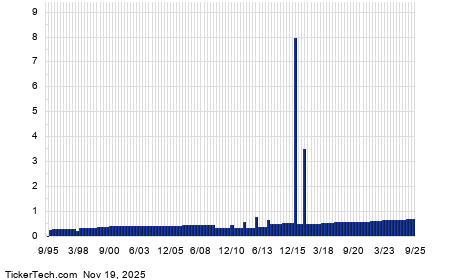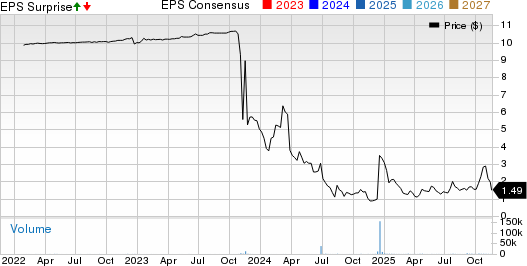Microsoft Shows Strong Q3 Results Amidst Mixed Market Performance
Last year, Microsoft (NASDAQ: MSFT) was the only stock among the “Magnificent Seven” that lagged behind the S&P 500 (SNPINDEX: ^GSPC). However, strong fiscal Q3 results and positive projections signal a promising outlook for 2025.
Azure Drives Revenue Growth
While Microsoft is widely recognized for its software productivity tools like Excel and Word, its cloud computing unit, Azure, has emerged as the key growth driver. This trend persisted in the most recent quarter.
During fiscal Q3, Azure’s revenue surged by 33%, or 35% when adjusted for constant currencies, marking the seventh consecutive quarter of growth above 30%. This exceeded earlier forecasts of 31% to 32% for constant currency growth. The company attributed this success to faster-than-anticipated capacity deployment and noted that AI services contributed nearly half of Azure’s overall growth.
The total revenue from the cloud segment, termed “intelligent cloud,” rose 21% year over year to $26.8 billion. Additionally, GitHub played a significant role in this growth, as users of GitHub Copilot quadrupled to over 15 million year over year.
Looking ahead, Microsoft anticipates Azure revenue to increase by 34% to 35% in constant currencies for fiscal Q4, driven by robust service demand. The company has acknowledged that this demand is outpacing expectations, potentially leading to capacity limitations after June.
Investment Strategies for Fiscal 2026 and Beyond
For fiscal 2026, Microsoft plans to increase its capital expenditure (capex) budget, though growth will occur at a slower rate than in fiscal 2025. The investment focus will shift towards short-lived assets, which are more closely aligned with revenue generation, favoring items like servers and GPUs over long-term investments in real estate and data centers.

Image source: Getty Images.
Moreover, in the productivity and business processes segment, which includes Microsoft 365 and LinkedIn, revenue grew 10% year over year to reach $29.9 billion. All four primary solutions in this segment reported solid growth.
| Microsoft 365 Commercial | Microsoft 365 Consumer | Dynamics | ||
|---|---|---|---|---|
| Revenue growth | 11% | 10% | 7% | 11% |
Data source: SEC filings.
Microsoft also reported that the adoption of Microsoft 365 Copilot tripled year over year, with increasing deal sizes. A record number of customers returned to purchase additional seats during the quarter. Additionally, the cloud-based Dynamics 365 platform saw continued strong user adoption.
In its “more personal computing” segment, which includes Windows and Xbox, revenue grew by 6% year over year, totaling $13.4 billion. The search and news advertising business led this segment with a notable 21% revenue growth, fueled by increased activity from third-party partnerships. Windows OEM and device revenue rose by 3%.
Overall, Microsoft’s total revenue increased by 13% year over year to $70.1 billion, while earnings per share (EPS) climbed 18% to reach $3.46. These results surpassed analyst expectations, which average $68.4 billion in revenue and $3.22 EPS, according to LSEG.
For fiscal Q4, Microsoft projects revenue between $73.15 billion and $74.25 billion, exceeding the consensus estimate of $72.26 billion.
Outlook for Microsoft Stock
Given its past performance, Microsoft appears set for consistent growth in the coming years. Azure has established itself as a leading player in cloud computing, with capacity enhancements keeping pace with demand—a prudent approach.
Additionally, other business segments are maintaining solid growth. While Microsoft 365 Copilot offers promising opportunities, the company must continue to innovate in this rapidly evolving AI landscape.
The stock currently trades at a forward price-to-earnings (P/E) ratio below 29 based on fiscal 2026 projections. While this reflects a fair valuation, it’s not a bargain.
Overall, Microsoft stands out as a solid long-term investment; however, caution is advised due to its recent strong performance post-earnings.
Investment Considerations
Before investing in Microsoft, consider this:
It’s important to explore all options. An analysis by an independent team has noted alternative stocks that may yield better returns over time.
Geoffrey Seiler has no position in any of the stocks mentioned. The Motley Fool has positions in and recommends Microsoft. The Motley Fool has a disclosure policy.
The views expressed herein are those of the author and do not necessarily reflect those of Nasdaq, Inc.








